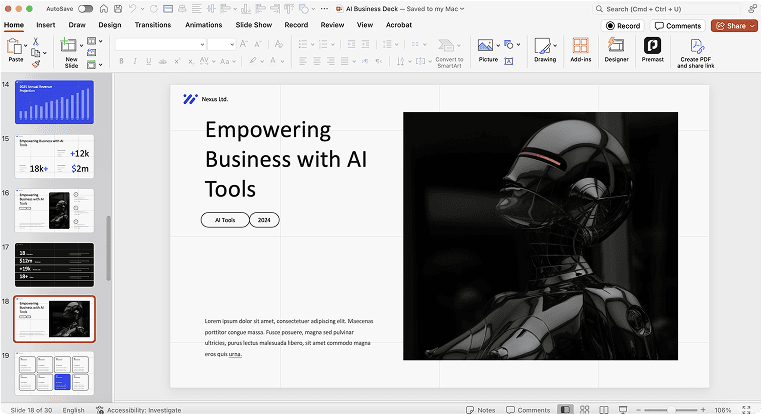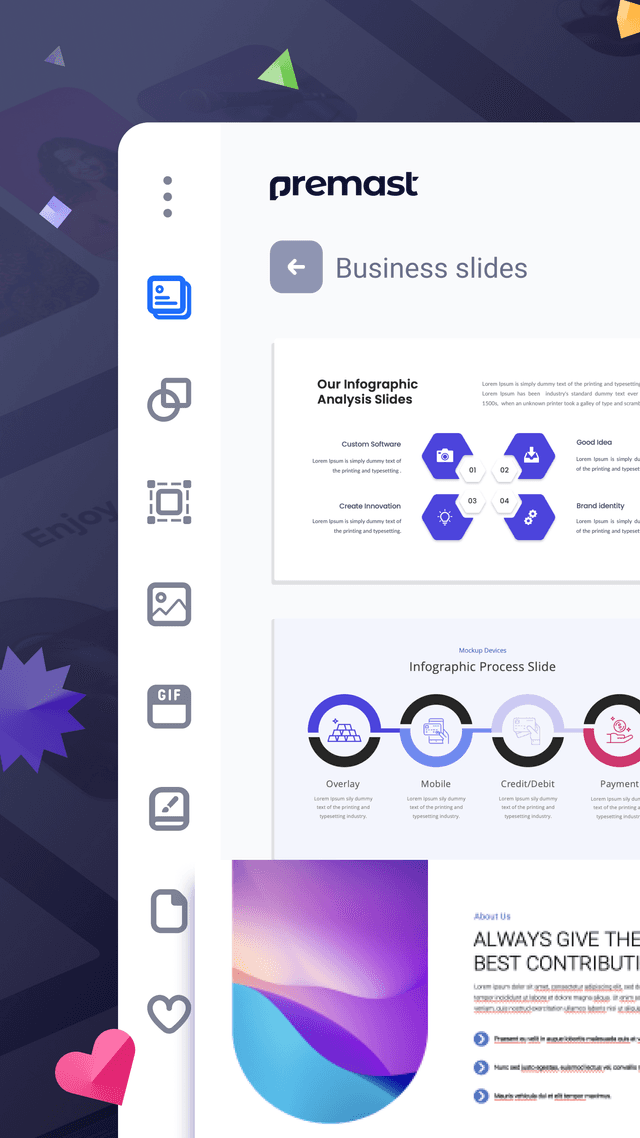
Public Speaking Tips
How to Get Ready for a Speech in One Day When Having Presentation Fear?
Mastery of public speaking is crucial due to its immense significance in various professional endeavors. It serves as a valuable tool for individuals to excel amidst their competitors, establish meaningful connections with prospective clients, and create a lasting impression on influential leaders within their respective industries. Here, we have these public speaking tips that may help you:
Tip 1 “Adopt a strategic mindset”:
The focus of presentations lies not in individual slides but in our ability to engage and persuade our audience through interactive means. In essence, each time we prepare a presentation, strategic thinking is essential. let’s create a presentation outline and consider the following questions:
- What key points do we want the audience to remember from our presentation in the future?
- What actions should be taken once we have concluded the presentation?
- How can we establish and strengthen our audience’s trust?
The last point is important because face-to-face interaction with eye contact has a stronger impact than any other type of communication. When we think strategically, we put ourselves in the right mindset to support marketing efforts and connect with people effectively.
Tip 2 “Be knowledgeable about the components”:
 Memorizing the presentation content while speaking is the worst thing to do. If you cannot speak confidently and adapt on the spot, the audience will lose interest and not develop trust in our business. It is not necessary to memorize every word of the script. Instead, focus on comprehending the following aspects of the presentation:
Memorizing the presentation content while speaking is the worst thing to do. If you cannot speak confidently and adapt on the spot, the audience will lose interest and not develop trust in our business. It is not necessary to memorize every word of the script. Instead, focus on comprehending the following aspects of the presentation:
- The information we need to convey.
- The overall structure and sequence of the materials.
- The issue at hand and the solutions we propose.
- The objectives and aims of the presentation.
- Anticipated questions and prepared answers.
Tip 3 “Captures the audience’s attention”:
The initial impact of a presentation holds immense importance. We must grab the audience’s attention and persuade them to engage in your presentation, given the circumstances fully. The essential element for creating a captivating presentation, regardless of the audience or topic, lies in investing time to prepare and become well-versed in our material. We should focus on refining our speaking skills and concisely delivering the entire content. Try to start your presentation with short storytelling about your business, then relate that story to your audience to attract your audience’s attention.
Tip 4 “Communicate sincerely and openly”:
When our attention is captured by the audience, it can be intimidating and push us to communicate convincingly and confidently, especially in moments of nervousness. To overcome this, we recommend selecting a specific audience member to engage with initially, as an ice-breaking tactic. However, it is important not to choose someone who tends to interrupt our speaking. Instead, opt for a friendly face in the crowd and direct our speech towards that person. This approach will foster enthusiasm among everyone, resulting in an enjoyable performance.
Tip 5 “Know the audience’s needs”:
Understanding the demographic of our audiences is crucial. When we address a specific audience, whether they are our loved ones or colleagues, it is essential to cater to their needs. If they are friends and family, our goal should be to entertain them. On the other hand, if they are corporate individuals, our aim should be to educate and motivate them.
During the preparation of our presentation, we must constantly consider the audience’s requirements rather than simply convey what we want to say. While delivering the presentation, it is important to pay close attention to the audience’s reactions. In essence, our primary focus should be on comprehending and effectively responding to our audience.
Tip 6 ” Follow 10-20-30 rules”:
In general, we should consider the slides as our guiding standard. The presenter plays a crucial role in enhancing the value of a good set of slides. Therefore, our slides need to have a minimalist approach, focusing on essential information rather than overwhelming details. Guy Kawasaki offers three recommendations for creating effective slideshows:
- Aim for a minimum of 10 slides, as this is considered the optimal number.
- Allocate 20 minutes for presenting the ten slides.
- Ensure that no font size is smaller than 30 points to ensure readability.
Tip 7 “Practice more in front of the mirror to enhance your abilities”:
Speaking in front of a mirror is an excellent way to practice gestures, hand usage, and expression. Consistency is essential to improve in all these areas. While rehearsing is helpful, it’s different when presenting to a real audience.
To avoid a disastrous first presentation, it’s important to practice our presentation multiple times. This will help us become familiar with the order, transitions, and content, leading to increased confidence. Feeling ready to speak can eliminate up to 80% of our fears.
Tip 8 “Optimize your time management skills”:
Kindly consider arriving ahead of time to avoid unnecessary stress caused by traffic and difficulties in locating the building and room. If feasible, it would be beneficial to visit the intended venue a few days in advance to ensure its correct location and make necessary arrangements.
Subsequently, let’s rehearse our presentation to conclude at least 10-15% earlier than the allocated time. This additional time will provide us with the flexibility to prepare for any Q&A sessions. However, it is important not to let the Q&A sessions extend for too long. If we feel that we are speaking excessively, we should revisit the time allocation. Once again, the key is to practice diligently and consistently.
Tip 9 “Pick the right words for the situation”:
The content of our speech and the selection of our words are significant. If our audience has doubts about our intentions, they will pay close attention to the specific words we employ and examine our objectives more closely. Thus, it is crucial to exercise caution when choosing our words, particularly when conveying important information. To achieve this, we should consider the following:
- Take into account the audience’s professions to comprehend the subject matter and determine the appropriate language to use.
- Employ shorter sentences to evoke a sense of urgency.
- Simplify complex terms to avoid convoluted explanations.
Moreover, in addition to verbal communication, our body language also conveys powerful messages, contributing to the overall impact of our message.
Tip 10″ Use appropriate voice”:
Using the right voice tone in a presentation is essential for effectively conveying your message and engaging your audience. Here are some tips to help you use the right voice tone. Know your audience: Understand the demographics, interests, and expectations of your audience. Adjust your voice tone accordingly to resonate with them. For example, if presenting to a group of professionals, maintain a confident and authoritative tone. Speed and volume of voice are very important in the presentation to emphasize your message. So, you should fir your voice based on the case or situation
Remember, mastering the right voice tone takes practice. By being mindful of your audience, content, and delivery, you can create a compelling and engaging presentation that leaves a lasting impact.
To end up
When you can speak confidently in front of others, you succeed. By following the public speaking tips mentioned above, your presentations will improve greatly, boosting your confidence along the way. Give it your best and good luck! Enrich your presentation journey by visiting Premast to download more PowerPoint presentation Templates with many categories.
Spread the word
Start for free.
Design, manage and share your Presentation and branded content
















